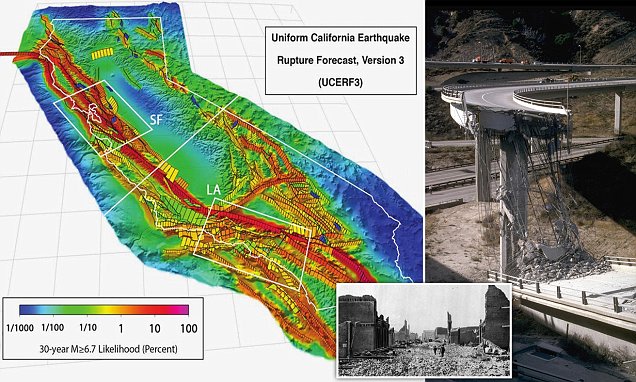image source: https://www.dailymail.co.uk
Welcome to our informative guide on earthquakes in California! If you’re wondering how frequently earthquakes occur in the Golden State, you’ve come to the right place. In this article, we will discuss the frequency and impact of earthquakes in California, as well as important safety measures to prepare for and respond to these natural disasters. So, if you want to learn more about how often earthquakes happen in California, keep reading!
Uncovering the Frequency of Earthquakes in California: Exploring the Frequency and Severity of Seismic Activity
Earthquakes are a natural occurrence that can have devastating effects on the environment and human populations. In California, the frequency and severity of earthquakes have been a constant concern due to the state’s location along the San Andreas Fault. In order to better understand the impact of earthquakes in California, it is important to explore the frequency and severity of seismic activity in the state.
The frequency of earthquakes in California varies greatly depending on the location and time frame being studied. According to the United States Geological Survey (USGS), there are thousands of earthquakes in California each year, but only a small percentage of these earthquakes are felt by humans. The majority of earthquakes in California are small, with magnitudes of 2.0 or less, and are often only detected by seismographs.
However, there are also larger earthquakes that occur in California, which can have a significant impact on the environment and communities. The USGS reports that there is an average of one magnitude 6.0 or larger earthquake per year in California. These larger earthquakes are capable of causing damage to buildings and infrastructure, and can also trigger landslides and other hazards.
The severity of earthquakes in California is measured on the Richter scale, which assigns a numerical value to the energy released by an earthquake. The higher the magnitude, the more severe the earthquake. In California, the most severe earthquake in recent history was the 1906 San Francisco earthquake, which had a magnitude of 7.8. This earthquake caused widespread destruction and resulted in over 3,000 deaths.
In addition to the frequency and severity of earthquakes, it is also important to consider the potential for future earthquakes in California. The USGS has developed earthquake hazard maps that show areas of the state that are at a higher risk for earthquakes. These maps take into account factors such as the location of faults, previous earthquake activity, and the geology of the region.
It is also important to note that earthquakes cannot be predicted with complete accuracy. While scientists can forecast the likelihood of earthquakes in certain areas, they cannot predict exactly when or where an earthquake will occur. This is why preparedness and emergency planning are crucial for communities in earthquake-prone areas like California.
In conclusion, the frequency and severity of earthquakes in California vary depending on the location and time frame being studied. While the majority of earthquakes in California are small and go unnoticed, there is also the potential for larger and more damaging earthquakes. It is important for individuals and communities to be prepared for earthquakes and to follow safety protocols in the event of an earthquake. By understanding the frequency and severity of earthquakes in California, we can better prepare for and mitigate the impact of these natural disasters.In conclusion, earthquakes are a common occurrence in California, with the state experiencing hundreds of tremors each year. The frequency of earthquakes in California is a result of its location on the highly active Pacific Ring of Fire. As a result, it is important for residents to be prepared and have a plan in place for when earthquakes do happen. By understanding the frequency of earthquakes in California and taking necessary precautions, individuals can help minimize the impact of these natural disasters. Stay informed and stay safe.
Reference
- Why do earthquakes happen far away from plate boundaries?, https://www.livescience.com/planet-earth/earthquakes/why-do-earthquakes-happen-far-away-from-plate-boundaries
- Where Do Earthquakes Happen?, https://www.mtu.edu/geo/community/seismology/learn/earthquake-location/
- Why Do Earthquakes Happen?, https://www.mtu.edu/geo/community/seismology/learn/earthquake-cause/
- Why do earthquakes happen far away from plate boundaries?, https://headtopics.com/us/why-do-earthquakes-happen-far-away-from-plate-boundaries-52468902
